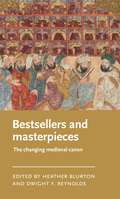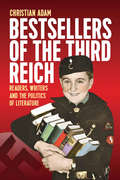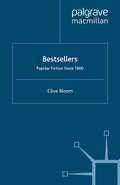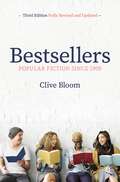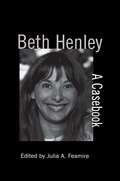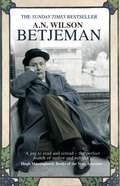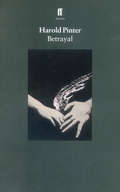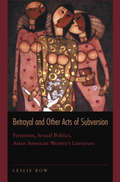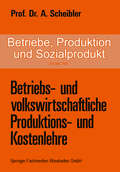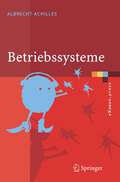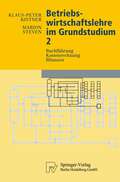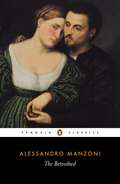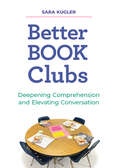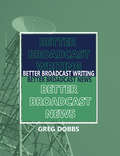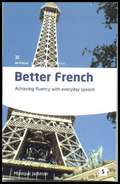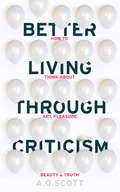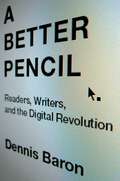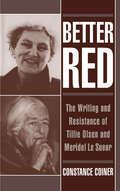- Table View
- List View
Bestsellers and masterpieces: The changing medieval canon (Manchester Medieval Literature and Culture)
by Heather Blurton Dwight F. ReynoldsBestsellers and masterpieces: The changing medieval canon addresses the strange fact that, in both European and Middle Eastern medieval studies, those texts that we now study and teach as the most canonical representations of their era were in fact not popular or even widely read in their day. On the other hand, those texts that were popular, as evidenced by the extant manuscript record, are taught and studied with far less frequency. The book provides cross-cultural insight into both the literary tastes of the medieval period and the literary and political forces behind the creation of the ‘modern canon’ of medieval literature.
Bestsellers and masterpieces: The changing medieval canon (Manchester Medieval Literature and Culture)
by Heather Blurton Dwight F. Reynolds David Matthews Anke Bernau James PazBestsellers and masterpieces: The changing medieval canon addresses the strange fact that, in both European and Middle Eastern medieval studies, those texts that we now study and teach as the most canonical representations of their era were in fact not popular or even widely read in their day. On the other hand, those texts that were popular, as evidenced by the extant manuscript record, are taught and studied with far less frequency. The book provides cross-cultural insight into both the literary tastes of the medieval period and the literary and political forces behind the creation of the ‘modern canon’ of medieval literature.
Bestsellers of the Third Reich: Readers, Writers and the Politics of Literature
by Christian AdamDespite the displacement of countless authors, frequent bans of specific titles, and high-profile book burnings, the German book industry boomed during the Nazi period. Notwithstanding the millions of copies of Mein Kampf that were sold, the era’s most popular books were diverse and often surprising in retrospect, despite an oppressive ideological and cultural climate: Huxley’s Brave New World was widely read in the 1930s, while Saint-Exupéry’s Wind, Sand and Stars was a great success during the war years. Bestsellers of the Third Reich surveys this motley collection of books, along with the circumstances of their publication, to provide an innovative new window into the history of Nazi Germany.
Bestsellers: Popular Fiction since 1900
by C. BloomThis guide and reference work of all of the bestselling books, authors and genres since the beginning of the 20th century, provides an insight into over 100 years of publishing and reading as well as taking us on a journey into the heart of the British imagination.
Bestsellers: Popular Fiction Since 1900
by Clive BloomThis book charts the publishing industry and bestselling fiction from 1900, featuring a comprehensive list of all bestselling fiction titles in the UK. This third edition includes a new introduction which features additional information on current trends in reading including the rise of Black, Asian and LGBTQIA+ publishing; the continuing importance of certain genres and up to date trends in publishing, bookselling, library borrowing and literacy. There are sections on writing for children, on the importance of audiobooks and book clubs, self- published bestsellers as well as many new entries to the present day including bestselling authors such as David Walliams, Peter James, George R R Martin and far less well known authors whose books s sell in their thousands. This is the essential guide to best-selling books, authors, genres, publishing and bookselling since 1900, providing a unique insight into more than a century of entertainment, and opening a window into the reading habits and social life of the British from the death of Queen Victoria to the Coronavirus Pandemic.
Beth Henley: A Casebook (Casebooks on Modern Dramatists)
by Julia A. FesmireFirst Published in 2002. Routledge is an imprint of Taylor & Francis, an informa company.
Beth Henley: A Casebook (Casebooks on Modern Dramatists #33)
by Julia A. FesmireFirst Published in 2002. Routledge is an imprint of Taylor & Francis, an informa company.
Betjeman: A Life
by A. N. WilsonJohn Betjeman was by far the most popular poet of the twentieth century. His collected poems sold over two million copies. Television audiences loved his quirky evocations of landscape and architecture. As Poet Laureate, he became a national icon, but behind the public man were doubts and demons. For much of his fifty year marriage to Penelope Chetwode, the daughter of a Field Marshal, Betjeman had a relationship with Elizabeth Cavendish, the daughter of the Duke of Devonshire and Lady in Waiting to Princess Margaret. Betjeman, a devout Anglican, was tormented by guilt about the storms this emotional triangle caused.This book is the first to use fully the vast archive of personal material relating to Betjeman's private life, including literally hundreds of letters written by his wife about their life together and apart. It is a celebration of a much-loved poet, a brave campaigner for architecture at risk, and a highly popular public performer.
Betrayal: Betrayal; Monologue; One For The Road; Mountain Language; Family Voices; A Kind Of Alaska; Victoria Station; Precisely; The New World Order; Party Time; Moonlight: Ashes To Ashes; Celebration; Umbrellas; God's District; Apart From That (Pinter Plays Ser.)
by Harold Pinter'Betrayal is a new departure and a bold one . . . Pinter has found a way of making memory active and dramatic, giving an audience the experience of the mind's accelerating momentum as it pieces together the past with a combination of curiosity and regret. He shows man betrayed not only by man, but by time - a recurring theme which has found its proper scenic correlative . . . Pinter captures the psyche's sly manoeuvres for self-respect with a sardonic forgiveness . . . a master craftsman honouring his talent by setting it new, difficult tasks' New Society'There is hardly a line into which desire, pain, alarm, sorrow, rage or some kind of blend of feelings has not been compressed, like volatile gas in a cylinder less stable than it looks . . . Pinter's narrative method takes "what's next?" out of the spectator's and replaces it with the rather deeper "how?" and "why?" Why did love pass? How did these people cope with the lies, the evasions, the sudden dangers, panic and the contradictory feelings behind their own deftly engineered masks? The play's subject is not sex, not even adultery, but the politics of betrayal and the damage it inflicts on all involved.' The TimesFirst staged at the National Theatre in 1978, Betrayal was revived at the Almeida Theatre, London, in 1991. Twenty years after its first showing, it returned to the National in 1998.
Betrayal and Other Acts of Subversion: Feminism, Sexual Politics, Asian American Women's Literature
by Leslie BowAsian American women have long dealt with charges of betrayal within and beyond their communities. Images of their "disloyalty" pervade American culture, from the daughter who is branded a traitor to family for adopting American ways, to the war bride who immigrates in defiance of her countrymen, to a figure such as Yoko Ono, accused of breaking up the Beatles with her "seduction" of John Lennon. Leslie Bow here explores how representations of females transgressing the social order play out in literature by Asian American women. Questions of ethnic belonging, sexuality, identification, and political allegiance are among the issues raised by such writers as Jeanne Wakatsuki Houston, Bharati Mukherjee, Jade Snow Wong, Amy Tan, Sky Lee, Le Ly Hayslip, Wendy Law-Yone, Fiona Cheong, and Nellie Wong. Beginning with the notion that feminist and Asian American identity are mutually exclusive, Bow analyzes how women serve as boundary markers between ethnic or national collectives in order to reveal the male-based nature of social cohesion. In exploring the relationship between femininity and citizenship, liberal feminism and American racial discourse, and women's domestic abuse and human rights, the author suggests that Asian American women not only mediate sexuality's construction as a determiner of loyalty but also manipulate that construction as a tool of political persuasion in their writing. The language of betrayal, she argues, offers a potent rhetorical means of signaling how belonging is policed by individuals and by the state. Bow's bold analysis exposes the stakes behind maintaining ethnic, feminist, and national alliances, particularly for women who claim multiple loyalties.
Betrayal and Other Acts of Subversion: Feminism, Sexual Politics, Asian American Women's Literature (PDF)
by Leslie BowAsian American women have long dealt with charges of betrayal within and beyond their communities. Images of their "disloyalty" pervade American culture, from the daughter who is branded a traitor to family for adopting American ways, to the war bride who immigrates in defiance of her countrymen, to a figure such as Yoko Ono, accused of breaking up the Beatles with her "seduction" of John Lennon. Leslie Bow here explores how representations of females transgressing the social order play out in literature by Asian American women. Questions of ethnic belonging, sexuality, identification, and political allegiance are among the issues raised by such writers as Jeanne Wakatsuki Houston, Bharati Mukherjee, Jade Snow Wong, Amy Tan, Sky Lee, Le Ly Hayslip, Wendy Law-Yone, Fiona Cheong, and Nellie Wong. Beginning with the notion that feminist and Asian American identity are mutually exclusive, Bow analyzes how women serve as boundary markers between ethnic or national collectives in order to reveal the male-based nature of social cohesion. In exploring the relationship between femininity and citizenship, liberal feminism and American racial discourse, and women's domestic abuse and human rights, the author suggests that Asian American women not only mediate sexuality's construction as a determiner of loyalty but also manipulate that construction as a tool of political persuasion in their writing. The language of betrayal, she argues, offers a potent rhetorical means of signaling how belonging is policed by individuals and by the state. Bow's bold analysis exposes the stakes behind maintaining ethnic, feminist, and national alliances, particularly for women who claim multiple loyalties.
Betriebe, Produktion und Sozialprodukt: Erster Teil Betriebs- und volkswirtschaftliche Produktions- und Kostenlehre
by Albert ScheiblerBetriebssysteme: Eine kompakte Einführung mit Linux (eXamen.press)
by Albrecht AchillesDas vorliegende Lehrbuch gibt eine fundierte und vielschichtige Einführung in die Konzepte und Funktionen moderner Betriebssysteme. Die grundlegenden Mechanismen eines Betriebssystems werden dabei anhand konkreter Programmlistings des Linux-Kernels analysiert und vergegenständlicht. Die Komplexität eines Betriebssystems und der beeindruckende Einfallsreichtum der zugrunde liegenden Algorithmik und deren geschickter Implementierung in C-Kode stehen im Zentrum des Buches. Der Leser erhält damit ein solides Verständnis der System-Architektur und deren konkreter Realisierung. Der Text ist für das Grundstudium ab dem dritten Semester geeignet und setzt neben grundlegenden Kenntnissen von Algorithmen und Datenstrukturen ein solides Verständnis der C-Programmierung voraus.
Betriebswirtschaftslehre im Grundstudium 2: Buchführung, Kostenrechnung, Bilanzen (Physica-Lehrbuch)
by Klaus-Peter Kistner Marion StevenDer zweite Band der Betriebswirtschaftslehre im Grundstudium befaßt sich mit dem betrieblichen Rechnungswesen. Er führt im ersten Teil knapp in das System der doppelten Buchführung ein und behandelt im zweiten Teil die Kostenrechnung. Neben der Technik der Kostenrechnung wird die Teil- und Plankostenrechnung dargestellt sowie auf neuere Entwicklungen eingegangen. Themen des dritten Teils sind der Jahresabschluß, die Rechnungslegung im Konzern und die Verfahren der Bilanzanalyse. In der didaktisch geschickten Aufbereitung des Lehrstoffs spiegelt sich die langjährige Lehrerfahrung der Autoren im Grundstudium.
The Betrothed: A New Translation, Volume 2 - Primary Source Edition
by Alessandro Manzoni Bruce PenmanSet in Lombardy during the Spanish occupation of the late 1620s, The Betrothed tells the story of two young lovers, Renzo and Lucia, prevented from marrying by the petty tyrant Don Rodrigo, who desires Lucia for himself. Forced to flee, they are then cruelly separated, and must face many dangers including plague, famine and imprisonment, and confront a variety of strange characters - the mysterious Nun of Monza, the fiery Father Cristoforo and the sinister 'Unnamed' - in their struggle to be reunited. A vigorous portrayal of enduring passion, The Betrothed's exploration of love, power and faith presents a whirling panorama of seventeenth-century Italian life and is one of the greatest European historical novels.
Better Book Clubs: Deepening Comprehension and Elevating Conversation
by Sara KuglerIn her comprehensive guide,Better Book Clubs: Deepening Comprehension and Elevating Conversation, literacy coach and staff developer Sara Kugler shows you how to combine the power of book clubs with assessment-driven instruction to support your students as they talk and think about texts together. Using authenticbook club conversationsas an assessment of academic talk and text understanding, Kugler raises the bar on typical professional discussions about book clubs, moving beyond teacher-directed interactions and surface-level conversations to include: Structures, teaching methods, and routines that support authenticity and independence in book clubsSuggestions for starting, scaffolding, and sustaining effective, student-centered book clubsTips for listening in on clubs as a way to assess academic talk and text understandingMethods for moving from observation into instruction that improves conversation and comprehensionTouchstone anchor charts and sample lessons for launching and maintaining strong clubs at a variety of independence levelsWith a dual focus on stronger comprehension and improved conversations,Better Book Clubs will help you establish effective book clubs that will engage your readers, enhance your learning communities, and become an indispensable component of your literacy classroom.
Better Book Clubs: Deepening Comprehension and Elevating Conversation
by Sara KuglerIn her comprehensive guide,Better Book Clubs: Deepening Comprehension and Elevating Conversation, literacy coach and staff developer Sara Kugler shows you how to combine the power of book clubs with assessment-driven instruction to support your students as they talk and think about texts together. Using authenticbook club conversationsas an assessment of academic talk and text understanding, Kugler raises the bar on typical professional discussions about book clubs, moving beyond teacher-directed interactions and surface-level conversations to include: Structures, teaching methods, and routines that support authenticity and independence in book clubsSuggestions for starting, scaffolding, and sustaining effective, student-centered book clubsTips for listening in on clubs as a way to assess academic talk and text understandingMethods for moving from observation into instruction that improves conversation and comprehensionTouchstone anchor charts and sample lessons for launching and maintaining strong clubs at a variety of independence levelsWith a dual focus on stronger comprehension and improved conversations,Better Book Clubs will help you establish effective book clubs that will engage your readers, enhance your learning communities, and become an indispensable component of your literacy classroom.
Better Broadcast Writing, Better Broadcast News
by Greg DobbsBetter Broadcast Writing, Better Broadcast News teaches students how to write with the conversational simplicity required for radio and TV. This text draws on the Emmy Award-winning author's decades of professional experience in broadcast journalism. In addition to writing, the text also discusses the other elements that make up a good story--producing, reporting, shooting, editing, and ethics. The author's real-world perspective conveys the excitement of a career in journalism.
Better Broadcast Writing, Better Broadcast News
by Greg DobbsBetter Broadcast Writing, Better Broadcast News teaches students how to write with the conversational simplicity required for radio and TV. This text draws on the Emmy Award-winning author's decades of professional experience in broadcast journalism. In addition to writing, the text also discusses the other elements that make up a good story--producing, reporting, shooting, editing, and ethics. The author's real-world perspective conveys the excitement of a career in journalism.
Better French: Achieving Fluency with Everyday Speech (4th Edition) (PDF)
by Monique JackmanMany people learn French for years at school, only to reach a plateau beyond which they never emerge. This is an effective short-cut to fluency. "Better French" helps the reader by showing them the right way to use problem words. It addresses the subtleties of the language. Are donc and alors interchangeable? What about grand or gros? When do you use c'est or il est? When do you pronounce the final 's' in 'plus'? Learning the answers to these and a host of other questions can steer you to success.
Better Living Through Criticism: How To Think About Art, Pleasure, Beauty, And Truth
by A. O. ScottFew could explain, let alone seek out, a career in criticism. Yet what A. O. Scott shows in Better Living Through Criticism is that we are, in fact, all critics: because critical thinking informs almost every aspect of artistic creation, of civil action, of interpersonal life. With penetrating insight and humour, Scott shows that while individual critics – himself included – can make mistakes and find flaws where they shouldn't, criticism as a discipline is one of the noblest, most creative and urgent activities.Using his own film criticism as a starting point – everything from an infamous dismissal of the international blockbuster The Avengers to his intense affection for Pixar's animated Ratatouille – Scott expands outwards, easily guiding readers through the complexities of Rilke and Shelley, the origins of Chuck Berry and the Rolling Stones, the power of Marina Abramovic and 'Ode on a Grecian Urn' Scott shows that real criticism was and always will be the breath of fresh air that allows true creativity to thrive. As he puts it: ‘The time for criticism is always now, because the imperative to think clearly, never goes away.’
A Better Pencil: Readers, Writers, and the Digital Revolution
by Dennis BaronComputers, now the writer's tool of choice, are still blamed by skeptics for a variety of ills, from speeding writing up to the point of recklessness, to complicating or trivializing the writing process, to destroying the English language itself. A Better Pencil puts our complex, still-evolving hate-love relationship with computers and the internet into perspective, describing how the digital revolution influences our reading and writing practices, and how the latest technologies differ from what came before. The book explores our use of computers as writing tools in light of the history of communication technology, a history of how we love, fear, and actually use our writing technologies--not just computers, but also typewriters, pencils, and clay tablets. Dennis Baron shows that virtually all writing implements--and even writing itself--were greeted at first with anxiety and outrage: the printing press disrupted the "almost spiritual connection" between the writer and the page; the typewriter was "impersonal and noisy" and would "destroy the art of handwriting." Both pencils and computers were created for tasks that had nothing to do with writing. Pencils, crafted by woodworkers for marking up their boards, were quickly repurposed by writers and artists. The computer crunched numbers, not words, until writers saw it as the next writing machine. Baron also explores the new genres that the computer has launched: email, the instant message, the web page, the blog, social-networking pages like MySpace and Facebook, and communally-generated texts like Wikipedia and the Urban Dictionary, not to mention YouTube. Here then is a fascinating history of our tangled dealings with a wide range of writing instruments, from ancient papyrus to the modern laptop. With dozens of illustrations and many colorful anecdotes, the book will enthrall anyone interested in language, literacy, or writing.
A Better Pencil: Readers, Writers, and the Digital Revolution
by Dennis BaronComputers, now the writer's tool of choice, are still blamed by skeptics for a variety of ills, from speeding writing up to the point of recklessness, to complicating or trivializing the writing process, to destroying the English language itself. A Better Pencil puts our complex, still-evolving hate-love relationship with computers and the internet into perspective, describing how the digital revolution influences our reading and writing practices, and how the latest technologies differ from what came before. The book explores our use of computers as writing tools in light of the history of communication technology, a history of how we love, fear, and actually use our writing technologies--not just computers, but also typewriters, pencils, and clay tablets. Dennis Baron shows that virtually all writing implements--and even writing itself--were greeted at first with anxiety and outrage: the printing press disrupted the "almost spiritual connection" between the writer and the page; the typewriter was "impersonal and noisy" and would "destroy the art of handwriting." Both pencils and computers were created for tasks that had nothing to do with writing. Pencils, crafted by woodworkers for marking up their boards, were quickly repurposed by writers and artists. The computer crunched numbers, not words, until writers saw it as the next writing machine. Baron also explores the new genres that the computer has launched: email, the instant message, the web page, the blog, social-networking pages like MySpace and Facebook, and communally-generated texts like Wikipedia and the Urban Dictionary, not to mention YouTube. Here then is a fascinating history of our tangled dealings with a wide range of writing instruments, from ancient papyrus to the modern laptop. With dozens of illustrations and many colorful anecdotes, the book will enthrall anyone interested in language, literacy, or writing.
Better Red: The Writing and Resistance of Tillie Olsen and Meridel Le Sueur
by Constance CoinerBetter Red is an interdisciplinary study addressing the complicated intersection of American feminism and the political left as refracted in Tillie Olsen's and Meridel Le Sueur's lives and literary texts. The first book-length study to explore these feminist writers' ties to the American Communist Party, it contributes to a reenvisioning of 1930s U.S. Communism as well as to efforts to promote working-class writing as a legitimate category of literary analysis. At once loyal members of the male-dominated Communist party and emerging feminists, Olsen and Le Sueur exhibit in their writing tendencies both toward and away from Party tenets and attitudes--at points subverting formalist as well as orthodox Marxist literary categories. By producing working-class discourse, Olsen and Le Sueur challenge the bourgeois assumptions--often masked as classless and universal--of much canonical literature; and by creating working-class women's writing, they problematize the patriarchal nature of the Left and the masculinist assumptions of much proletarian literature, anticipating the concerns of "second wave" feminists a generation later.
